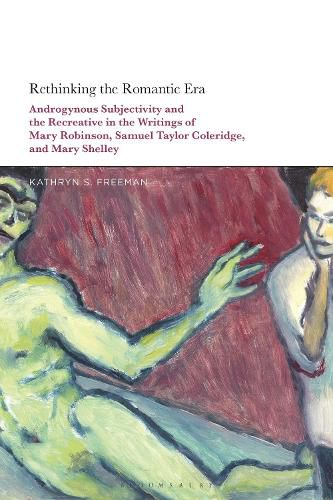Readings Newsletter
Become a Readings Member to make your shopping experience even easier.
Sign in or sign up for free!
You’re not far away from qualifying for FREE standard shipping within Australia
You’ve qualified for FREE standard shipping within Australia
The cart is loading…






Focusing on Samuel Taylor Coleridge, Mary Robinson and Mary Shelley, this book uses key concepts of androgyny, subjectivity and the re-creative as a productive framework to trace the fascinating textual interactions and dialogues among these authors. It crosses the boundary between male and female writers of the Romantic period by linking representations of gender with late Enlightenment upheavals regarding creativity and subjectivity, demonstrating how these interrelated concerns dismantle traditional binaries separating the canonical and the noncanonical; male and female; poetry and prose; good and evil; subject and object.
Through the convergences among the writings of Coleridge, Mary Robinson, and Mary Shelley, the book argues that each dismantles and reconfigures subjectivity as androgynous and amoral, subverting the centrality of the male gaze associated with canonical Romanticism. In doing so, it examines key works from each author’s oeuvre, from Coleridge’s canonical poems such as Rime of the Ancient Mariner, through Robinson’s lyrical poetry and novels such as Walsingham, to Mary Shelley’s fiction, including Frankenstein, Mathilda, and The Last Man.
$9.00 standard shipping within Australia
FREE standard shipping within Australia for orders over $100.00
Express & International shipping calculated at checkout
Focusing on Samuel Taylor Coleridge, Mary Robinson and Mary Shelley, this book uses key concepts of androgyny, subjectivity and the re-creative as a productive framework to trace the fascinating textual interactions and dialogues among these authors. It crosses the boundary between male and female writers of the Romantic period by linking representations of gender with late Enlightenment upheavals regarding creativity and subjectivity, demonstrating how these interrelated concerns dismantle traditional binaries separating the canonical and the noncanonical; male and female; poetry and prose; good and evil; subject and object.
Through the convergences among the writings of Coleridge, Mary Robinson, and Mary Shelley, the book argues that each dismantles and reconfigures subjectivity as androgynous and amoral, subverting the centrality of the male gaze associated with canonical Romanticism. In doing so, it examines key works from each author’s oeuvre, from Coleridge’s canonical poems such as Rime of the Ancient Mariner, through Robinson’s lyrical poetry and novels such as Walsingham, to Mary Shelley’s fiction, including Frankenstein, Mathilda, and The Last Man.